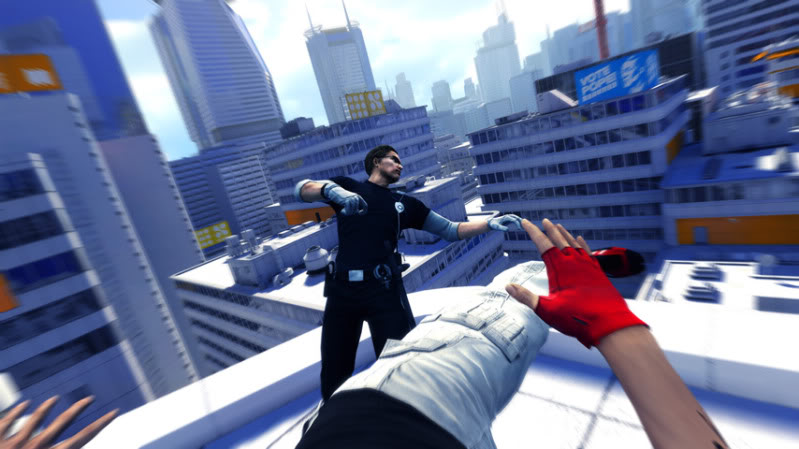
Editor's note: I agree with Jeremy wholeheartedly: Too many developers ignore of the possibilities the first-person perspective offers in favor of the "gun, cover, and multiplayer flavor of the week" approach. I bet a number of studios could make some great adventure, puzzle, and role-playing games from this perspective. Myst did this, what, 17 years ago. Imagine the impact today's tech could make on such games. -Jason
The first-person shooter sits atop the proverbial sales heap in today’s video-game industry while simultaneously getting blasted for a lack of innovation. This is in part to appeal to what the consumers want in a mainstream FPS title, but little doubt exists that the genre has stagnated as of late. While you could blame any number of shortcomings for this, one looms above the others: failing to take advantage of the perspective the games offer.
The term “first-person shooter” is self-explanatory. The player shoots things while viewing the world from the first-person viewpoint. Most of the biggest franchises, however, put the emphasis on the “shooter” part while completely ignoring the “first-person” aspect. Developers iterate guns with small evolutions in order to feel different than what came before. Level design is only concerned with how combat will play out. Most egregiously of all, multiplayer modes are forced into games that have no need of them.
But what of the other part of the descriptor? Where is the first-person perspective being pushed forward?

Developers face so many interesting design choices with the first-person perspective that no one explores. That you can’t see who you’re playing as opens narrative possibilities. Developers can exploit the field of vision the perspective offers in the gameplay (perhaps level design complemented with weather effects that smartly obscure vision). And that’s just a cursory view. Just think of what actual designers could dream up.
Bright spots have punctuated the genre's staleness. Breakdown and Mirror’s Edge attempt to replicate what a person would actually see while they were running or picking up ammo packs. Metroid Prime made first-person platforming palatable by using some subtle vision tricks. BioShock and Call of Duty 4: Modern Warfare utilized it simply as an immersion aid for powerful narrative moments. Would the golf-club scene with Andrew Ryan in BioShock have been as powerful if you weren’t seeing it from that viewpoint? What about nuclear-bomb scene in Call of Duty 4?
Sadly, these are the exceptions rather than the rule. As long as the games that emphasize shooting sell, publishers will continue to encourage future designs to follow suit. But designers should take heed of the other side, as endless possibilities to reach new heights exist simply by taking another perspective.

